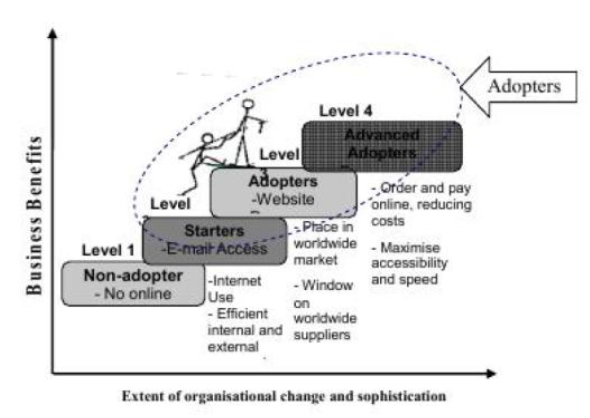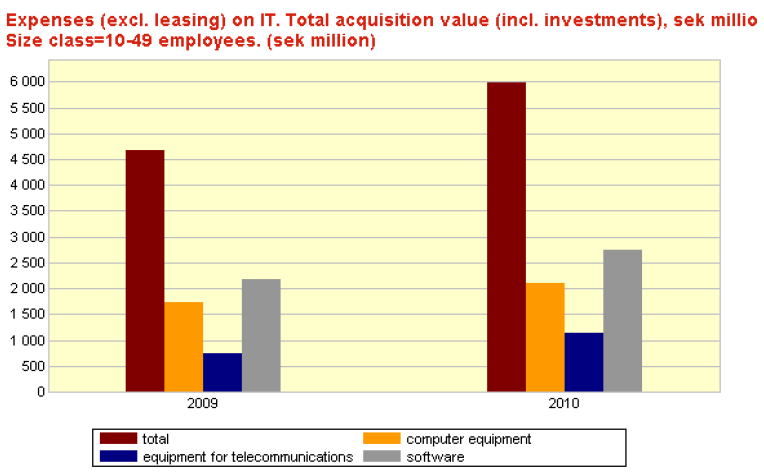ABSTRACT
The purpose of this thesis is to examine the influence of e-commerce on the small-size companies in Sweden. This thesis describes the drivers for e-commerce adoption and investigates the barriers and benefits faced from the companies when starting the process of implementation. A qualitative research was performed and an abductive approach was used, where the research findings and the theoretical background were connected by going back and forward in the process of analysis. Interviews with small companies in Värmland Country, Sweden were conducted in order to answer the research questions.
This study shows that Swedish companies have relatively well-developed e-commerce strategies comparing to other counties, but the gap between small and large companies is still visible. The decisions for e-commerce adoption are dependent on the knowledge of the owner /manager and e-commerce is extensively used as a marketing tool. Main benefits of e-commerce adoption are improved internal efficiency and increased information exchange. The results suggest that companies value less than before the cost factor and consider the lack of knowledge as a main barrier. At the same time many companies are not motivated enough to make improvements, because of lack of customer demand.
METHODOLOGY
The interviews with small companies in Sweden are performed in order to answer the research questions. Regarding the data collection, primary data used is obtained from the interviews, while secondary data is obtain from Internet, journals, books, articles, and official statistical publication. Figure 1 below summarizes and illustrates my methodology approach; the main points of the thesis and the working process can also be seen.
THEORETICAL BACKGROUND

Figure 2: E-commerce adoption ladder in small companies (Xu & Quaddus 2009, pp.304).
Importantly, Brand and Huizingh (2008) proved that there is a correlation between the adoption level and the intention to innovate. With the increased knowledge and satisfaction, the intention to future innovation is increasing. Xu and Quaddus (2009) also describe the development of e-commerce in small companies as a series of processes in which the company moves gradually and increase its electronic capabilities (figure 2).
FINDINGS

Figure 3: Expenses on IT (Source: Statistics Sweden 2012).
It is interesting to see that the increasing investments for information and telecommunication technology from small companies are more than the average. Companies have invested 28,5% more in 2010 comparing to 2009. As can be seen in figure 3, the overall investments made from the small companies (10-49 employees) accounts for 5 993 million SEK in 2010 (Statistic Sweden 2012).
DISCUSSION

Figure 4: Level of e-commerce development in the interviewed companies.
First, based on the theoretical model presented by Xu and Quaddus (2009) for the different stages of e-commerce adoption and according to the data obtained from the interviews it is visible that the three companies are on different level of e-commerce development.
CONCLUSION
This study shows that Swedish companies can be characterized with relatively well developed e-commerce strategies comparing to other countries. At the same time, differences between small and big companies in Sweden are being observed. As expected, the biggest company have reached more sophisticated levels of adoption. The decisions for e-commerce adoption in small-size firms are dependent on the knowledge of the owner/manager. Today, most of the small companies use e-commerce as a marketing tool and putting much importance on the information exchange and informing customers for the products and services.
This study shows that the improved internal efficiency and increased information exchanges are the main benefits from e-commerce for the small companies. By increased information exchange companies are able to cover much larger customer area and attract new customers. Being more informed for the characteristics of the products, customers are more satisfied and more willing to make orders. This study highlights that companies are shifting to a new way of finding customers which allows decreasing of their expenses for advertisement. At the same time companies experience cost saving by improved day-to-day operations.
The most important barriers for the small companies are the lack of innovation culture and knowledge. Even if some companies still consider the cost factor as most important this is because of insufficient understanding for e-commerce and the positive effect of it. This in turn leads to non-consistency or stopping the process of innovation. Other important barrier is the lack of customers demand. Further, the study shows that many of the small companies will not gain substantial benefits from these improvements because of the character of their businesses or market which does not encourage the process of innovation.
Source: Karlstads University
Authors: Diyan Ivanov
